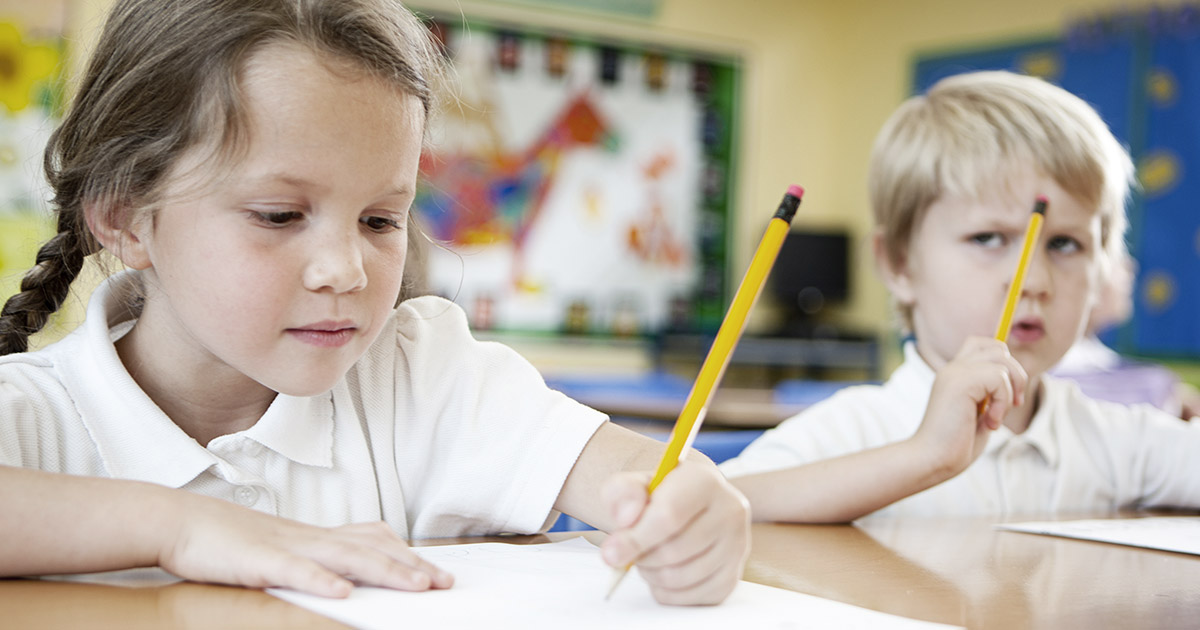Visual Processing and Spelling
November 6th, 2017Visual processing skills are foundational skills for both reading and spelling. Phonics is one of the first steps in learning to read as well as spell. Phonics depends on both the vision and auditory systems. Phonics is the ability to accurately relate an auditory sound with a visual symbol. This is exactly what we do when we spell. We use both the vision and auditory systems to do this.
“Seeing” is a process of learning. We do not learn to see merely for the purpose of “looking” at something. We learn to see in order “to learn” and “to understand”. In this sense, seeing becomes known as “perception or processing”. Visual perception is not only the ability to see, but it is the ability to understand and use what you see.
Spelling is the process of placing the correct letters with the sounds they represent to form words. This process of encoding (spelling) is dependent on both vision processing and auditory processing.
Visual Processing Areas Impact Spelling
Difficulties with visual processing areas can affect spelling. Kids that have poor visual memory may have difficulty with the ability to store and retrieve information that has been given with a visual stimulus. This is the ability to remember that you have seen a picture or a word before.
Visual Memory Activity
One activity you can do with your kids, is that when you go to a store, tell them to keep their eyes open and make sure to look around in the environment. If this is the first time, you can give them clues about what to pay attention to. When you leave, ask them some questions about what they saw. For example:
- What was the first thing you saw upon entering the store?
- Where were the checkout registers?
- Where was the bathroom?
- Were there any attention-grabbing signs?
- Did certain signs attract you more than others? What was your favorite?
- If a grocery store…
- Was the produce on the right or left side of the store as we walked in?
- Where was the bakery?
- If a department store…
- Where were the Women’s vs. Men’s sections (to the right or left)?
- Where were the changing rooms?
Start small, by asking your kids 5 questions and ask more the next time. You can also have them ask you questions about what they saw and see if you saw the same thing. Questions help recall pictures in our minds and they help us build our visual memory when we actively have to recall information that we see.
Visual Processing Areas: Visual Discrimination and Form Constancy
Kids that have trouble with visual discrimination and form-constancy may also have trouble with spelling. This is the ability to discern similarities and differences visually. For example, visual discrimination and form-constancy can impact your ability to tell the difference between ‘b‘ and ‘d‘, or ‘p‘ and ‘q‘.
Activity: Visual Discrimination
Use a magazine or newspaper. Have your kids find specific words or letters throughout a page. For example, find and circle all the ‘the‘, ‘for‘, and ‘that‘ words. With younger kids, start looking just for a single letter, such as ‘r‘, ‘n‘, ‘m‘, or ‘b‘. You can also reference your weekly spelling list and match it with an article that consists of the words. This will help your kids improve their visual discrimination skills. Often times, I will instruct the kids scan from left to right along the body of text to help them improve their eye-tracking and reading skills.
Spelling and Form Constancy
Letters are a little bit funny. They don’t necessarily hold their form or meaning if they are flipped or rotated. If you flip a ‘b’, it turns into a ‘d’. If you rotate a ‘b’, it turns to a ‘q’. If you rotate a ‘d’ it turns into a ‘p’. If you flip a ‘p’, it turns into a ‘q’. Other objects, such as a shoe, on the other hand, will always be a shoe. It does not matter which direction it is facing. It is easy for kids to have a little bit of difficulty when they are learning to spell to mix up some of their letters. One trick you can use for kids with ‘b’ and ‘d’ reversal difficulties, is to make a ‘bed’ with your hands.
Visual Motor Skills and Spelling
The visual motor area of visual processing is the ability to copy a shape, letter, or word correctly. This is also the ability to write a word correctly and legibly. If your kids are working on their handwriting, take a look at Handwriting Without Tears. The simple act of writing improves fine motor skills. I also love Mark Kistler’s Draw Squad. Practicing drawing and painting does not only help improve handwriting, but it also helps with general visual motor skills.
Our Awaken the Scholar Within Spelling and Phonics Program integrates visual processing and auditory processing activities with teaching spelling. This program improves 22 of the 27 areas of auditory, visual, and tactile/kinesthetic processing that impact learning. The program includes Making Spelling Sense which teaches you how to spell the most 500 used words with the 8 spelling patterns. The program also includes Five Minutes to Better Reading Skills, which helps build visual discrimination skills and improves reading fluency.


























